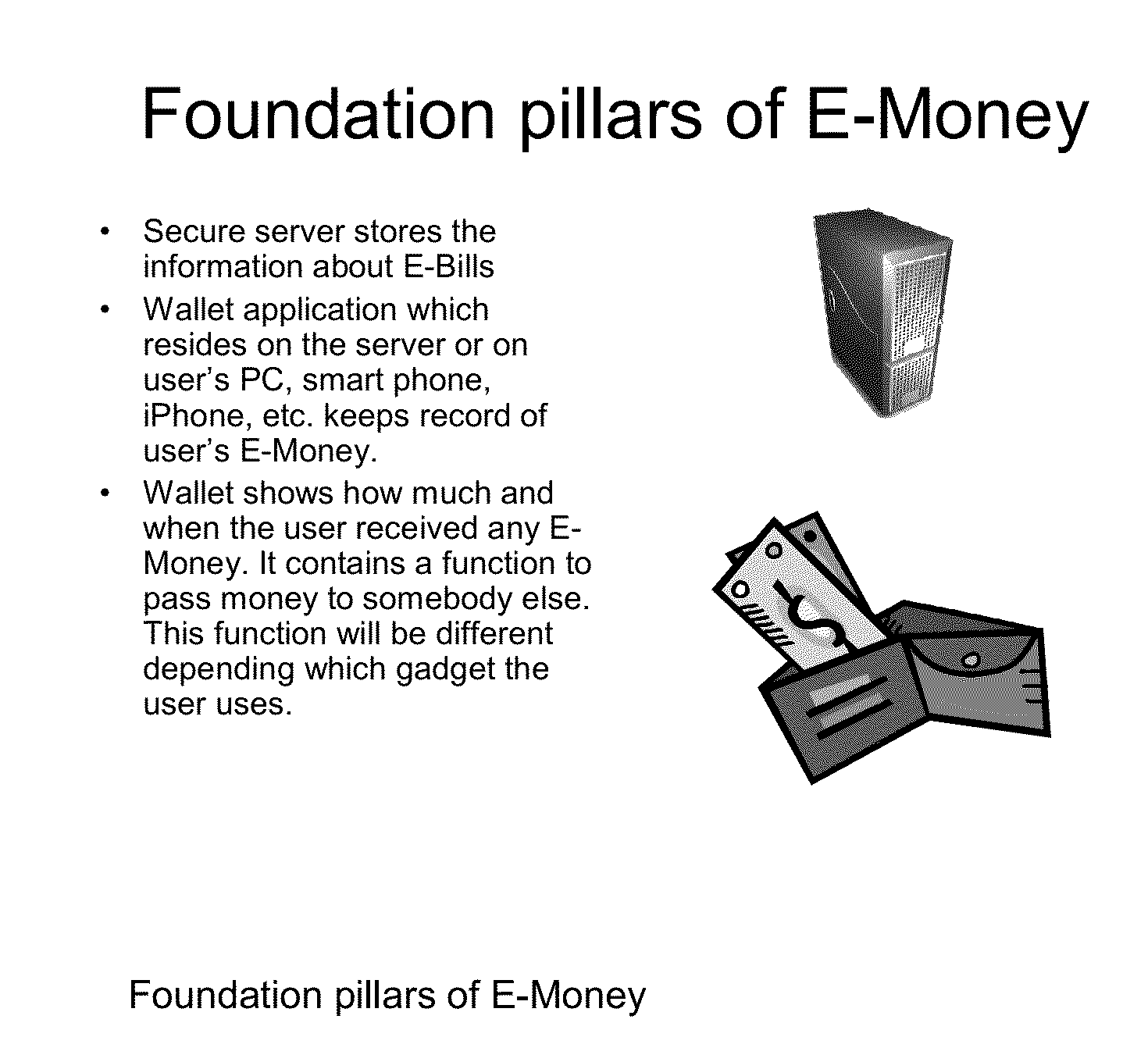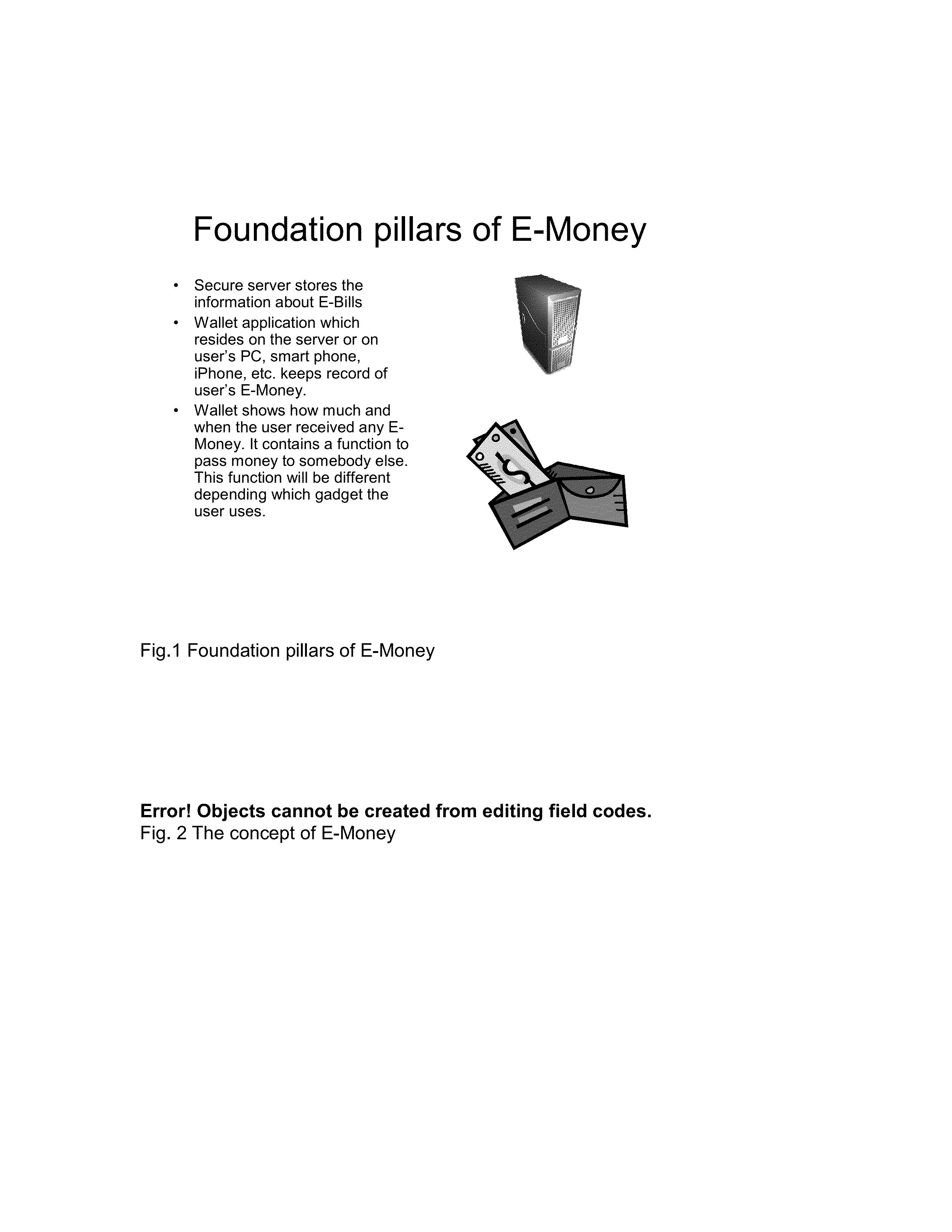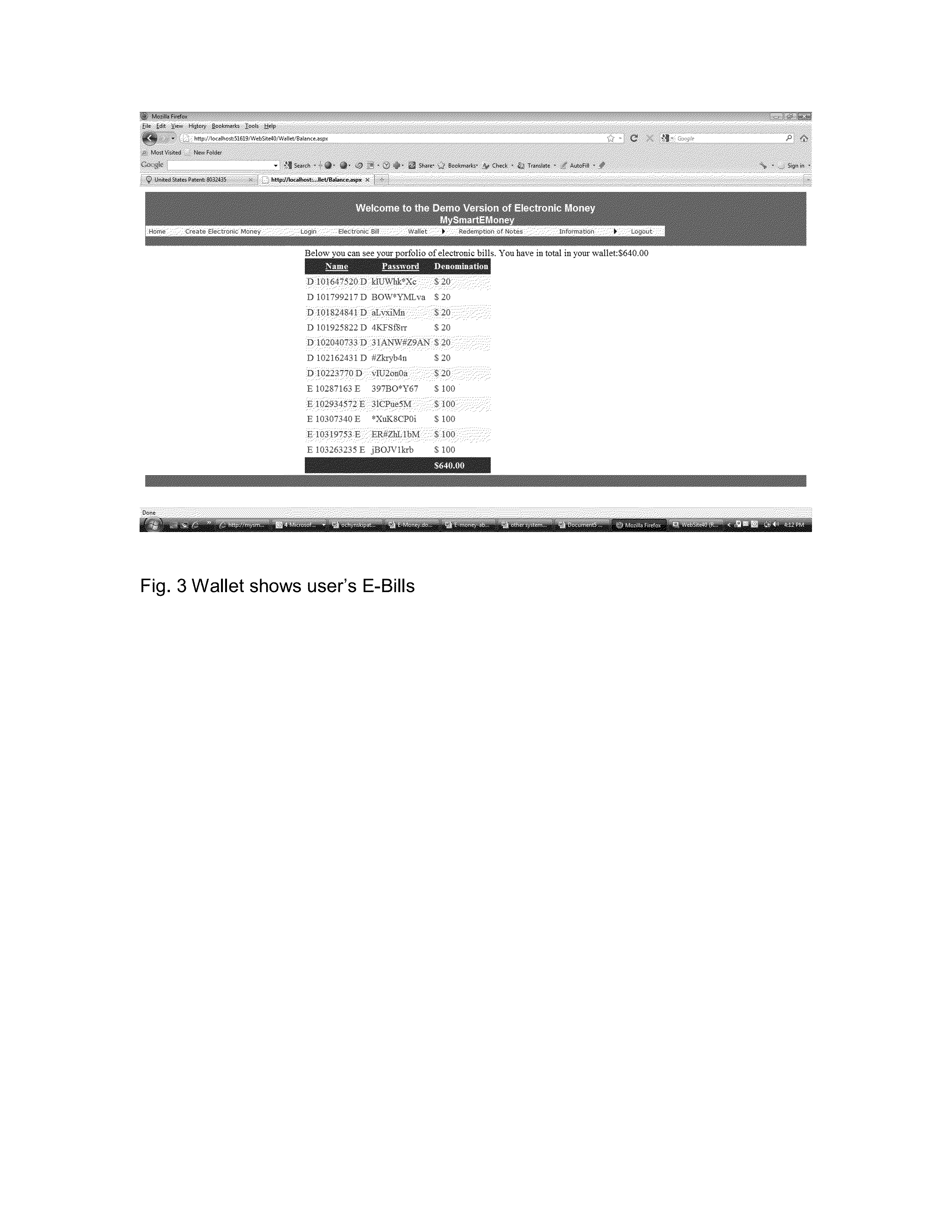The electronic wallet present several problems which, so far, have limited its use: it has a considerable security problem, inasmuch as the loss of the wallet entails the loss of the money it carries, it requires sophisticated storage means, coupled with a “
smart card”, as well as complicated and expensive
encryption procedures.
It further presents a
disadvantage that renders it unattractive for many persons, namely, it causes a loss of feeling of control over the money it contains.
Since all procedures are automated, encrypted and electronic, with only minimal intervention of the owner, many owners feel that they have no real control over the movement of their money.
The problem is a complicated one, because the use of credit cards requires that payee install a
credit card processing devise, and because in many transactions the buyer does not wish to provide details of himself, or of his
bank account.
Payments using debit cards have lower fees but are also less secure.
One of the earliest (1995) payments systems on
the Internet, CyberCash itself ran into financial trouble and declared bankruptcy in early 2001.
If a
coin matched the serial number of a
coin that had already been spent, fraudulent activity was detected.
Despite this innovative
system, not enough banks participated for its success, and in 1999, eCash Technologies, Inc. acquired DigiCash.
Adoption of flooz by both merchants and customers proved limited, and it never established itself as a widely recognized medium of exchange, which hindered both its usefulness and appeal.
A particular problem is the
payment risk inherent in many existing
payment systems as offered mostly by banks and the problem of float.
All payments which are tied to accounts and use book entry
system cannot be totally risk free and anonymous.
a) access to the first user's DPD containing money-representing data packets; and b)
software to generate new money-representing data packets and deliver to the second user the new money-representing data packets having a
monetary value equal to or less than the first monetary sum. The system with U.S. Pat. No. 8,051,011 requires that the buyer gives instructions to the
server to transfer sum from buyer to seller. The
server validates the transaction and makes the transfer. Every data packet caries with it an identification that permits server to recognize it, when reaches server again. These data packets are stored on various devises, like disk drive, diskette etc. provided that have to be accessible to the server when needed. Upon payment the used data packets are deleted and removed from the payer and new data packets are transmitted to the payee. Further the system requires that all data be copied onto magnetic, optical or other media, so as to ensure against loss or crashes of the media where the currency is saved. It requires as well that CIAS keeps
record of all spent sequences of symbols and does not validate any more payments that
relay on spent sequences of symbols. This can result in tremendous
record keeping exercise when system is used by many users. The system with U.S. Pat. No. 8,051,011 provides
anonymity but it still requires
verification whether the data packets (
electronic cash) are authentic and that data packages have not been used for payment, by comparing their UIN with a
database of previous transaction. In the embodiments of the system that we propose these activities are not required.
Overall the system is quiet cumbersome and also requires special devises to execute payment with the
electronic purse when it is being used in a physical store.
Simply put, the system with the U.S. Pat. No. 8,051,011 does not achieve a real world
money transfer system, and therefore complicates the payment process as well as making the system unfavorable to a user who wishes to use his
electronic money the same way he uses his physical money.
This leads to the danger that, if one has a disk
crash, or if one's computer is stolen, one has lost his money.
To avoid double spending all transactions are “duplicated” on all participating computers, and any new transaction has to refer to all previous transaction and required computational effort is enormous.
Any system which is based on credit or debit cards even new developments like PayWave and PayPass—provided by Visa and
MasterCard are not offering any reduction in fees for vendors accepting these payments.
Additionally, most of the prior art systems require the user to open an account with either a
bank, or a pseudo-bank, or with a supplier, and either to provide prepaid funds to these accounts, from which it possible to draw, or to perform relatively complicated operations when the user wishes to spend, withdraw or generate funds.
The reliance on encryption, especially public key encryption, whether based in
software or hardware comes at a price: the greater the use of encryption, the greater the
processing effort required to decrypt messages.
However most of the prior art systems do not use this feature.
Another severe drawback of certain systems is that they require that the cash dispenser be involved in the transaction, to identify the users (either the buyer, the seller, or both), rendering the transaction cumbersome, and detracting from its privacy.
 Login to View More
Login to View More  Login to View More
Login to View More 


